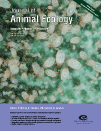Warming can enhance invasion success through asymmetries in energetic performance
Penk MR, Jeschke JM, Minchin D, Donohue I – 2016
Both climate warming and biological invasions are prominent drivers of global environmental change and it is important to determine how they interact. However, beyond tolerance and reproductive thresholds, little is known about temperature dependence of invaders' performance, particularly in the light of competitive attributes of functionally similar native species. We used experimentally derived energy budgets and field temperature data to determine whether anticipated warming will asymmetrically affect the energy budgets of the globally invasive Ponto-Caspian mysid crustacean Hemimysis anomala and a functionally similar native competitor (Mysis salemaai) whose range is currently being invaded. In contrast to M. salemaai, which maintains a constant feeding rate with temperature leading to diminishing energy assimilation, we found that H. anomala increases its feeding rate with temperature in parallel with growing metabolic demand. This enabled the invader to maintain high energy assimilation rates, conferring substantially higher scope for growth compared to the native analogue at spring-to-autumn temperatures. Anticipated warming will likely exacerbate this energetic asymmetry and remove the winter overlap, which, given the seasonal limitation of mutually preferred prey, appears to underpin coexistence of the two species. These results indicate that temperature-dependent asymmetries in scope for growth between invaders and native analogues comprise an important mechanism determining invasion success under warming climates. They also highlight the importance of considering relevant spectra of ecological contexts in predicting successful invaders and their impacts under warming scenarios.

